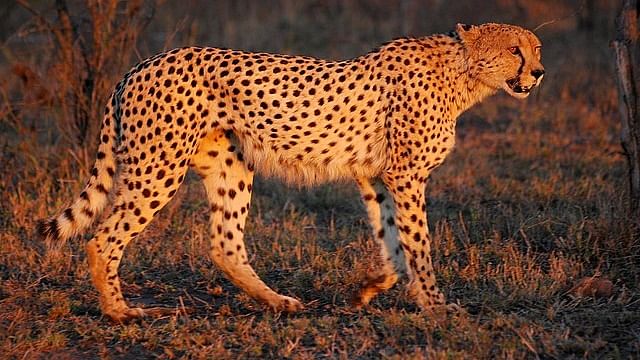
Prime Minister Narendra Modi is set to release eight cheetahs that are being brought from Namibia in the Kuno National Park in Madhya Pradesh on his birthday on September 17.
The cheetah is the only large carnivore that got completely wiped out from India, mainly due to their use for coursing, sport hunting, over-hunting and habitat loss.
Maharaja Ramanuj Pratap Singh Deo of Korea, Madhya Pradesh is believed to have killed the last three cheetahs in the country in 1947. In 1952, the Indian government officially declared the cheetah extinct in the country.
Also Read — More than 25 cheetahs will be brought to Kuno National Park in MP from Africa in future: Union minister
The growl of the cheetah once echoed across the country except the high mountains, coastal areas and the northeast.
Experts say the word "cheetah" originates from the Sanskrit word "chitraka", meaning "the spotted one". In Bhopal and Gandhinagar, cave paintings dating back to the Neolithic age depict the cheetah.
According to The End of a Trail - The Cheetah in India, a book written by Divyabhanusinh, the former vice-president of the Bombay Natural History Society (BNHS), Mughal emperor Akbar, who reigned from 1556 to 1605, had 1,000 cheetahs. The animals were used for hunting blackbucks and gazelles.
Akbar's son Jahangir is said to have caught more than 400 antelopes by cheetah coursing in the pargana of Pala, Divyabhanusinh notes.
The capture of cheetahs for hunting and the difficulty to breed the animals in captivity led to a decline in their population.
According to Divyabhanusinh, the British in India had little interest in cheetah coursing, though they did sometimes shoot and spear the animals sitting on horses.
By the beginning of the 20th century, the Indian cheetah population had dipped to a few hundreds and princes began to import African animals for coursing -- around 200 were imported between 1918 and 1945.
After the withdrawal of the British and the integration of the princely states with independent India, the sport died out as did the Indian cheetah.
At the first wildlife board meeting in independent India in 1952, the government had "called for assigning special priority for the protection of the cheetah in central India" and a "bold experimentation to preserve the cheetah" was suggested.
Subsequently, negotiations commenced with the Shah of Iran in the 1970s for bringing the Asiatic cheetah to India in exchange for Asiatic lions. Keeping in view the small Asiatic cheetah population of Iran and the genetic similarity between the Iranian and the African cheetah, it was decided to use the latter for introduction in India.
Attempts to bring cheetahs to the country were revived once more in 2009.
Ten sites were surveyed between 2010 and 2012. The Kuno National Park (KNP) in Madhya Pradesh was considered ready for receiving cheetahs with the least management interventions since a lot of investments were made in this protected area for reintroducing Asiatic lions, which is also an endangered species.
India signed a pact with Namibia in July for the re-introduction of cheetahs. Eight cheetahs -- five females and four males -- will depart from Namibia's capital Windhoek on September 16 and reach the Jaipur airport on the morning of September 17, which is also the prime minister's birthday.
The animals will then be flown to their new home -- Kuno -- in helicopters.